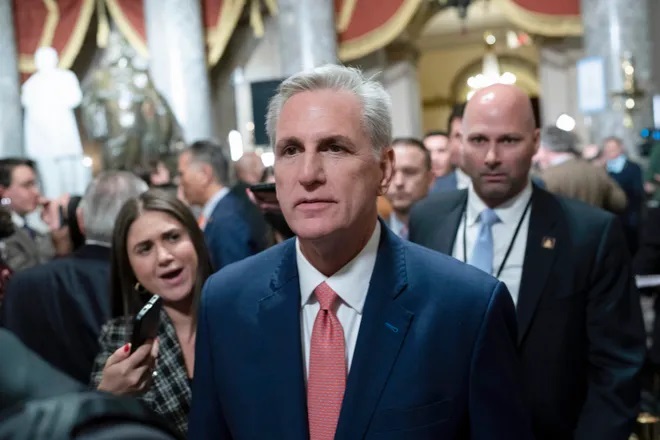On Jan. 19, the United States hit its “debt ceiling,” which is currently capped at $31.4 trillion. The “debt ceiling” refers to a statutory limit on how much the U.S. can borrow. To prevent a default, the Treasury Department, under the leadership of Treasury Secretary Janet Yellen, started implementing “extraordinary measures” to prevent a default. Yellen told lawmakers that she believes the efforts of her department will allow the government to pay its obligations until early June.
According to the Government Accountability Office, the U.S has never defaulted on its debt. The debt ceiling has been raised 22 times from 1987 to 2022.
In the event of a breach in the ceiling, Speaker of the House Kevin McCarthy pledged to pass a bill in the House to prioritize certain spending, including interest payments on the national debt.
On the other side of the aisle, the White House insists that they will not negotiate over the debt ceiling. President Biden summed up his position: “Only Congress can raise or lower that debt limit. So, let me be really clear: Raising the debt limit is about paying off our old debts. It has nothing to do with any new spending being considered.”
Democrats point out that raising the debt limit does not authorize new spending. Instead, it enables the Treasury Department to fund commitments that the government already has incurred. Stated differently, to control actual spending, lawmakers must change the laws that enable the funding in the first place.
The Congressional Budget Office (CBO) recently released updated budget and economic projections:
- The National debt will increase by $19 trillion over the next decade, bringing total debt to more than $50 trillion.
- Net interest costs will rise by 35% in 2023 – growing from $475 billion (the highest dollar amount ever) in 2022 to $640 billion in 2023.
- The U.S. will spend about $3.9 billion on interest per day by 2033.
- Interest costs are projected to increase by $10.5 trillion over the upcoming 10 years.
- Relative to the size of the economy, interest costs in 2030 will reach 3.3% of gross domestic product (GDP), exceeding the previous post World War II high of 3.2% of GDP.
- Within 10 years, the net interest cost will exceed federal spending on critical programs like Medicaid and defense.
- Spending on net interest will become the largest “program” in the federal budget within the next 30 years, outpacing spending on Medicare and Social Security.
‘Debt Ceiling Update: What’s At Stake’
What are the consequences of not raising the debt ceiling? The impact for both the federal government and the economy is severe.
The Peterson Foundation, a nonpartisan organization dedicated to addressing America’s long-term financial challenges, brought insight into this issue in their publication, “Debt Ceiling Update: What’s At Stake.” They wrote, “With spending limited to incoming revenues, the federal government could be forced to delay payments to employees, contracts would be violated, and payments to beneficiaries of government programs (including Social Security and Medicare) could be delayed or reduced. Although the Treasury Department would probably continue making timely principal and interest payments on the public debt, worries about the government’s creditworthiness would likely cause interest rates to rise and increase the government’s cost of borrowing.”
Policymakers need to stabilize the federal debt. It is an essential part of any sound fiscal policy. The U.S. currently suffers from a significant imbalance between spending and revenues. Recently, the Congressional Budget Office projected that interest costs will increase to $1.4 trillion in 2033. Rising interest payments will crowd out other priorities in the federal budget and lead to a cycle of higher deficits. Hopefully, the two sides can find a resolution short of outright debt default.
Originally published in the Sarasota Herald-Tribune




